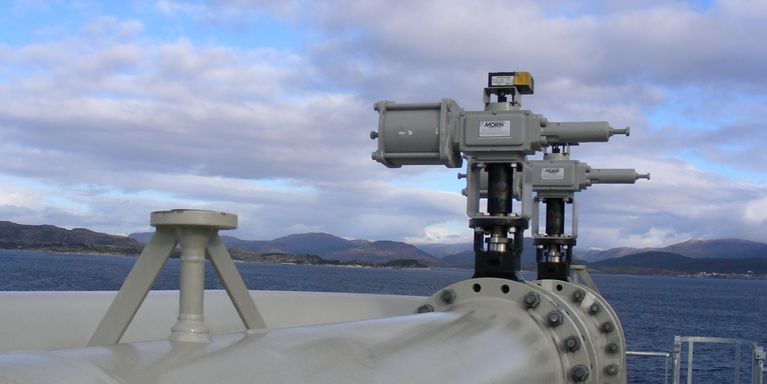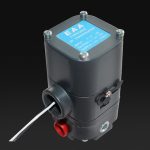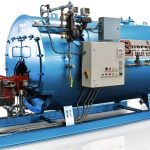The coupling of electronic and hydraulic technology is becoming increasingly common, especially in electrohydraulic actuators.
The coupling of electronic and hydraulic technology is becoming increasingly common, especially in electrohydraulic actuators. Advances in transducer logic and control capabilities have resulted in cylinders that transmit high forces with a high degree of positioning accuracy. Key to the operation of these actuators is the feedback system. A number of different feedback systems, both mechanical and electrical, are used, depending on the accuracy and durability required.
Linear transducer: One method for accurately sensing cylinder rod position is with a linear displacement transducer. In one widely used system, the transducer housing is mounted to the cylinder end cap, with the sensor rod extending into the hollowed-out piston rod. There is no physical contact between the sensor and cylinder rods.
To determine position, a magnet is attached to the cylinder piston. Current pulses transmitted down the sensor interact with the magnetic field and return a sonic pulse. Distance can be determined by measuring the transmission/reception time interval. Positioning accuracy is 0.001 to 0.003 in.
Hydraulic amplifier: Another way to accurately control position is to hydraulically amplify the motion of a stepping motor. By combining a stepping motor, servovalve, cylinder, and ball screw, positioning accuracy of 0.001 to 0.002 in. and repeatability of 0.0005 in. are possible. Stepping-motor rotation moves a cam to shift the valve spool laterally. This permits oil flow to the cylinder.
As the cylinder piston moves, the ballnut attached to the piston rotates the ball screw, which is connected to the spool. This spool rotation maintains the relative motion of the cam, so the speed of the cylinder is directly proportional to the rotational speed of the stepping motor.
Several choices of ball screws and helical cams provide a selection of servovalve gains and speed ranges to suit most applications. Finer resolution can also be provided through microstepping, which gives standard stepping motors up to 25,000 steps per revolution.
Rotary encoder: A somewhat similar means of control is with a rotary encoder. Here, piston motion again causes ball screw rotation. But in this case, the ball screw is attached to the encoder. Precise measurement of the screw rotation corresponds to a linear piston position. The controller processes this information and signals the servovalve to maintain or change flow accordingly.
Hall-effect sensors: Another approach for position sensing uses a precision-cut square thread on the cylinder rod exterior. After machining, the rod is plated to fill the thread grooves, returning the finish and dimensions to original specifications.
Two Hall-effect sensors, which detect the presence of a magnetic material, are positioned at the rod surface one-quarter thread pitch apart. These sensors “see through” the nonmagnetic chrome plating, but detect the square thread peaks. Output is in the form of two square waves which are 90° out of phase. Accuracy of this system is 0.025 ± 0.005 in.
Mechanical feedback: In one mechanical feedback system, rod displacement is directly proportional to the magnitude and polarity of an electrical input to a force motor. Here, system supply pressure is routed to the control valve and the rod end of the piston. Flow at the control valve passes through two equal size orifices to tank when in a neutral condition. Between the orifices, flow is ported to the cylinder piston. Because flow through two equal orifices gives equal pressure drop, pressure at the piston is one-half supply pressure. The piston is sized to be twice the area of the rod-side area; thus, forces on the piston are balanced.
The valve spool rides in a sleeve, which is held in contact with the follower by a compression spring. Likewise, the follower is held in contact with the feedback cone on the piston. As the piston moves back and forth, the follower moves up and down, forcing the valve sleeve to move through a proportional distance.
An electrical input to the force motor moves the valve spool through a distance and direction corresponding to the magnitude and polarity of the signal. When the spool is displaced relative to the sleeve, it meters flow in or out of the cylinder, causing the piston to move. As the piston moves, the follower rides along the feedback cone, which moves the sleeve until control-valve flow to the piston is shut off. Thus, every value of electrical input has a corresponding rod position.


